Hall of Birds
At the Field Museum of Natural History in Chicago, IL. the Ronald and Christina Gidwitz Hall of Birds is a fascinating place for any birdwatcher to visit. There is traditional taxidermy and nteractive displays with bird maps and educational videos,. The projections that adorn the walls with live-action silhouette footage and environmental sound make it an immersive experience.
The museum started building the bird collection from a part of the World’s Columbian Exposition of 1893—and today research and collecting continue. The Field Museum’s scientific bird collection has more than 530,000 specimens, including eggs and nests. It represents 90 percent of the world’s known bird species, several of which can no longer be found in the wild and is the third largest collection in the United States
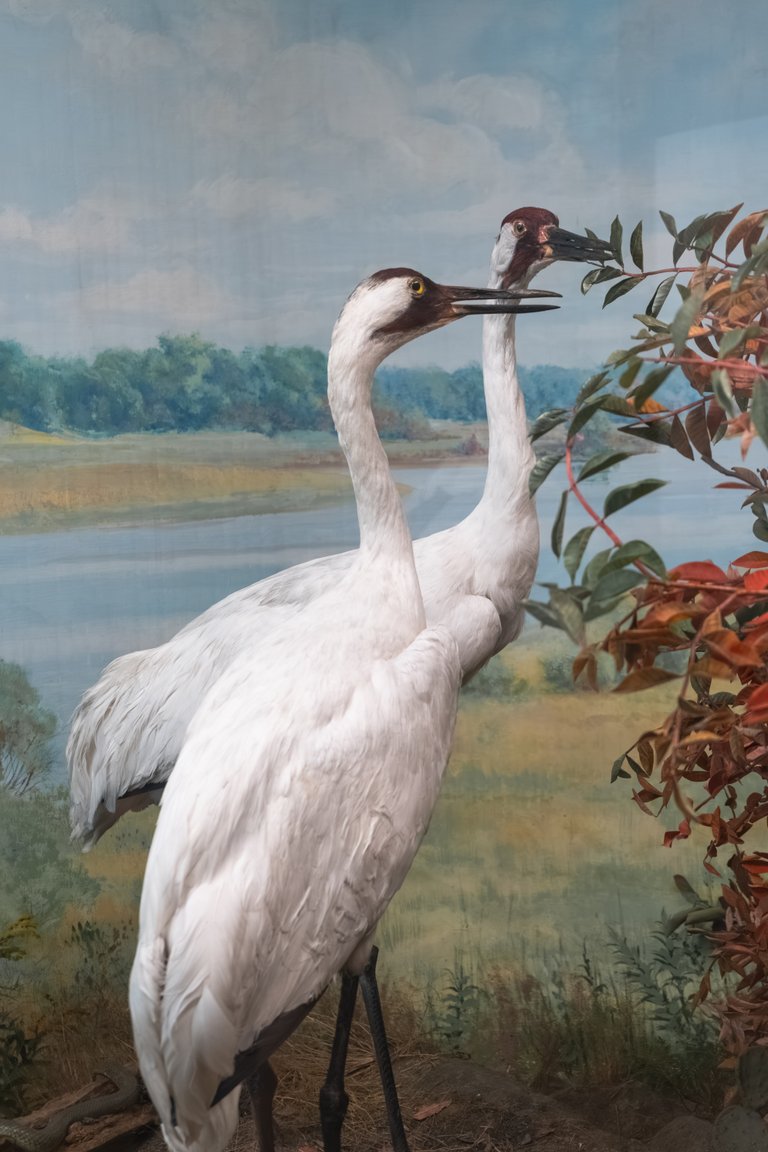 Sandhill Cranes
Sandhill Cranes
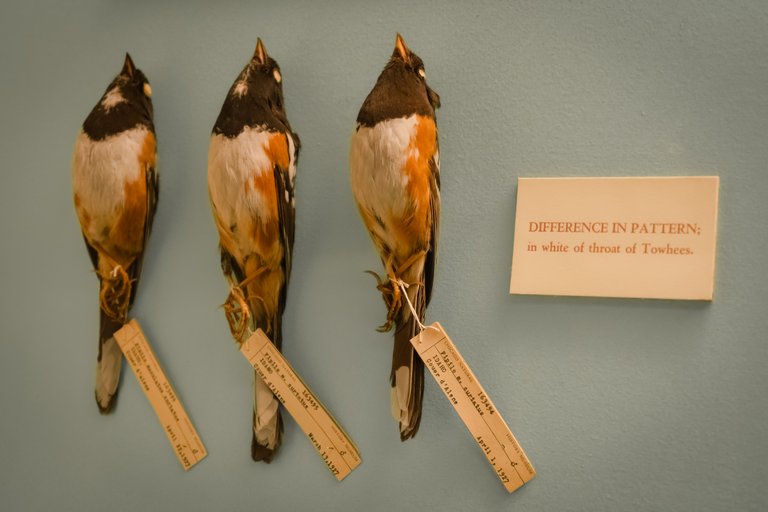 Towhees
Towhees
This display, Variation is the rule in nature, presented several different study skins of the same bird species to show how birds vary depending on factors including geography. The bottom of the display holds 12 different subspecies of Song Sparrow. Downy Woodpeckers, Towhees and Canada Warblers are also used. An accompanying informational sign explained study skins: “Birds used in this exhibit are made into study skins. These study skins, in which the head is in line with the body, wings folded, and feet crossed, are conventional for museum study. The method permits easy filing of specimens, available for study. The label, tied to each specimen, is very important. On it should be written the place and date of collecting and other available data. source

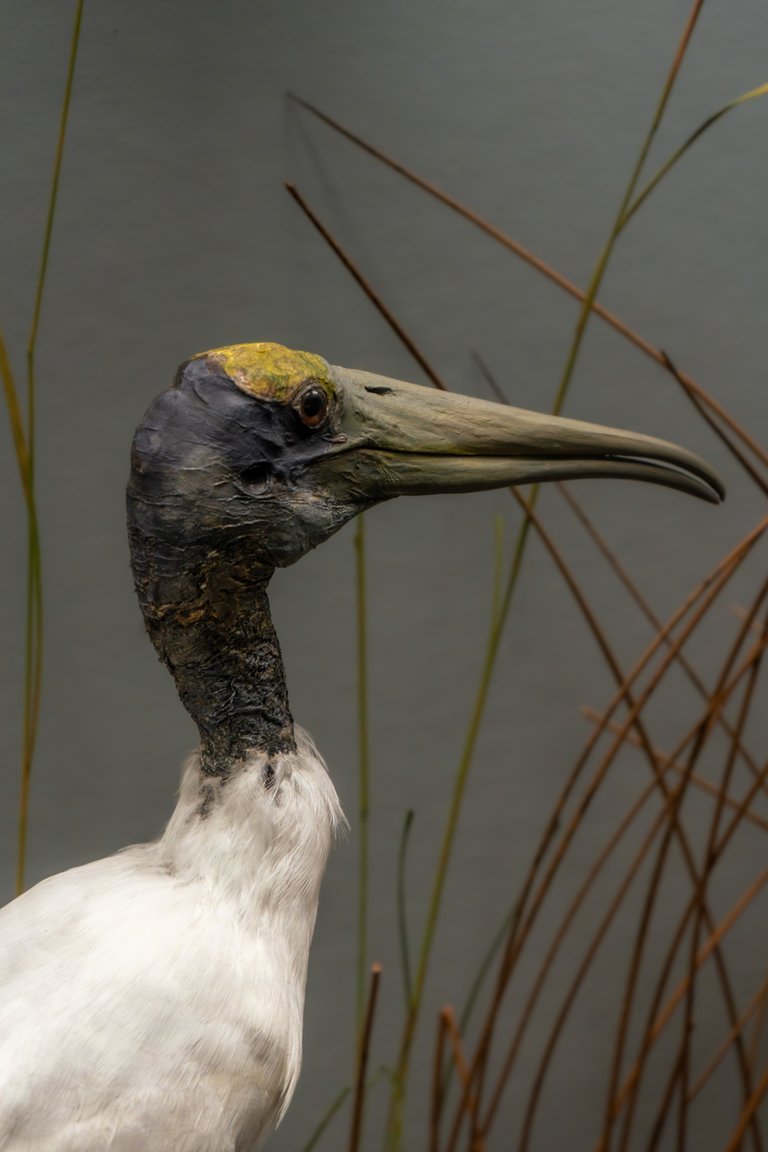
The wood stork (Mycteria americana) is a large, bald-headed wading bird native to the Americas and the only stork species that breeds in North America
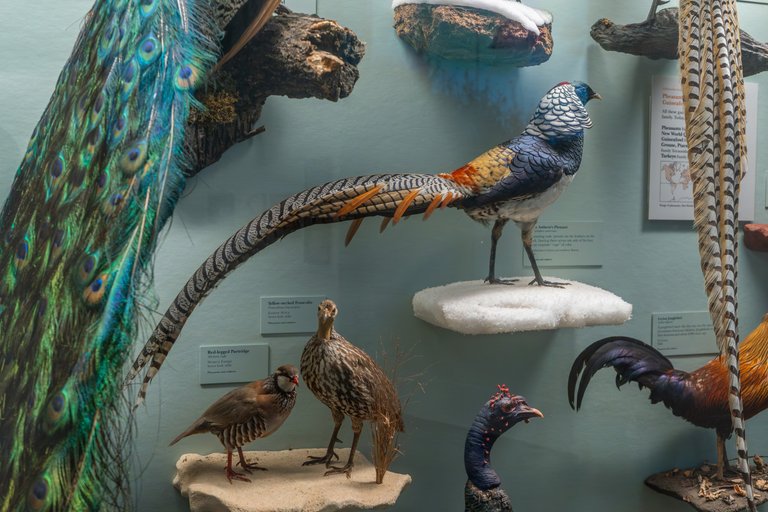
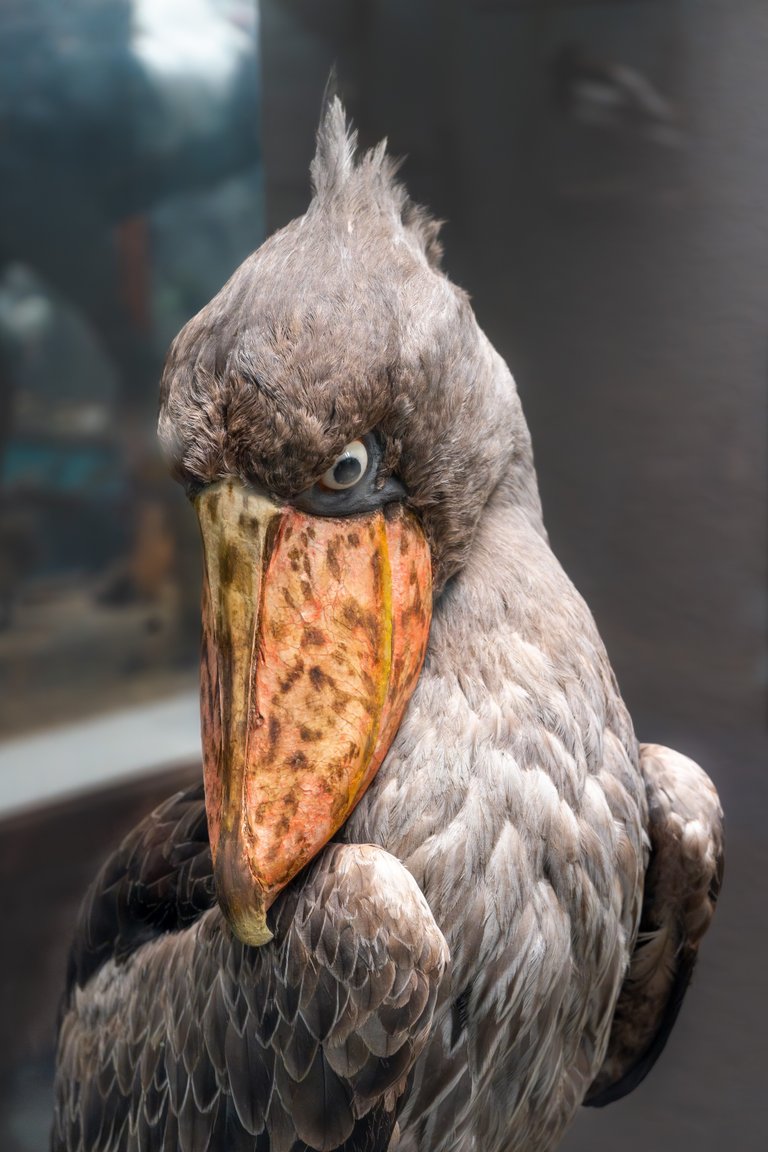
The Shoebill Stork lives in tropical East Africa in large swamps from South Sudan to Zambia. They are large birds with some individuals reaching up to 60 inches (152 cm).
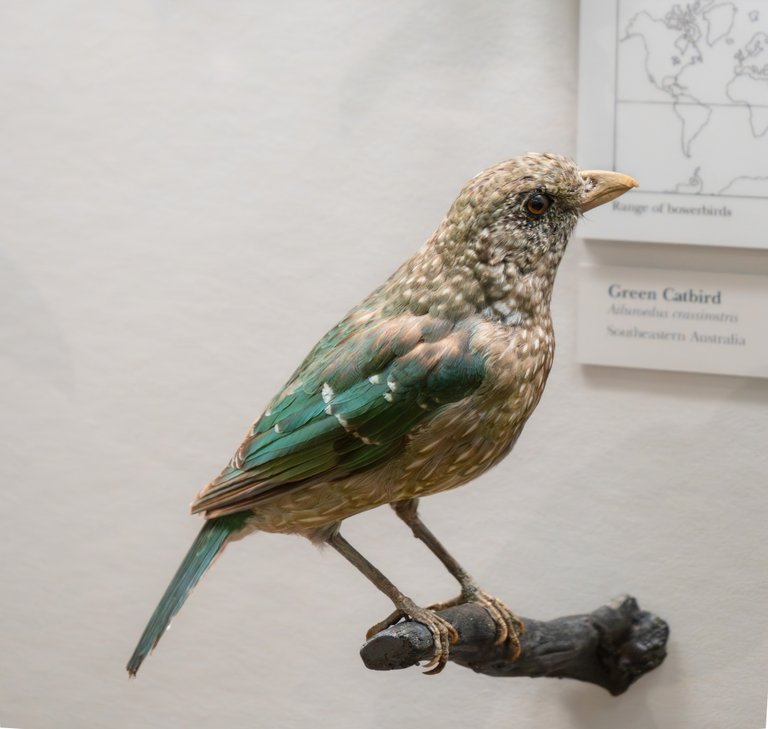 Green Catbird- Australia
Green Catbird- Australia
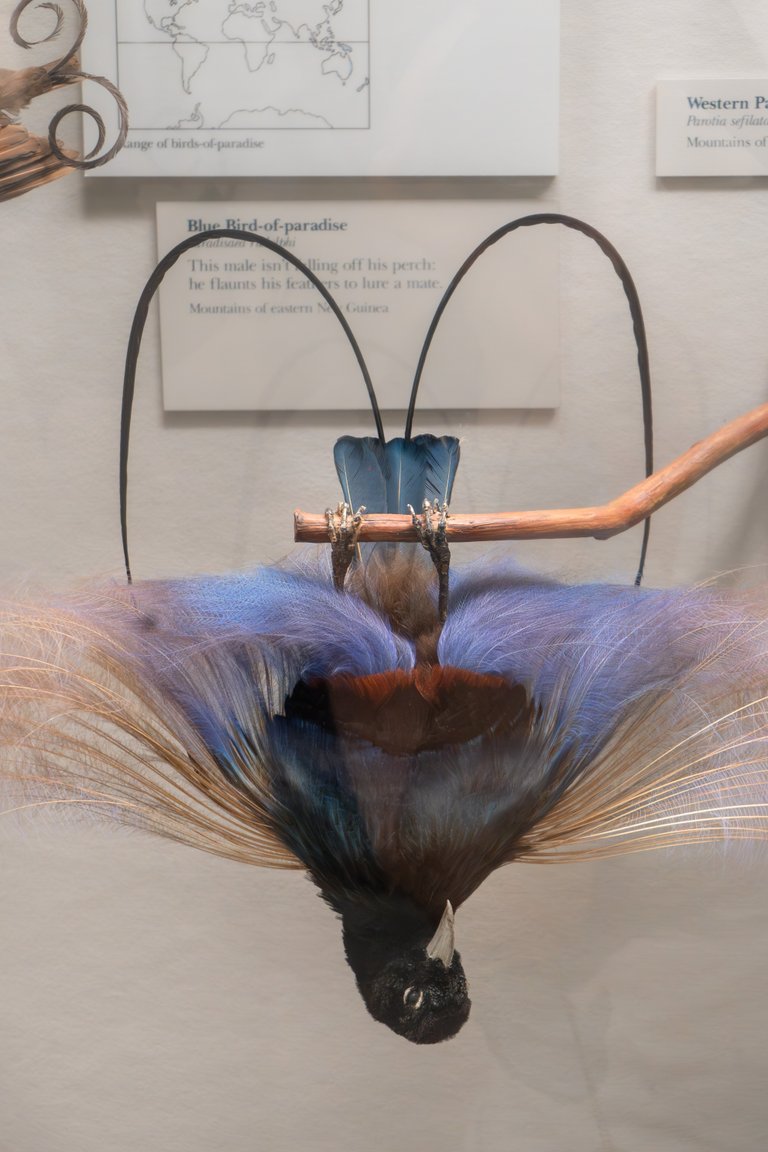 Blue Bird of Paradise
Blue Bird of Paradise
Birds of paradise inhabit rainforests in Papua New Guinea, Eastern Indonesia and Eastern Australia, and mainly feed on fruit and some insects.
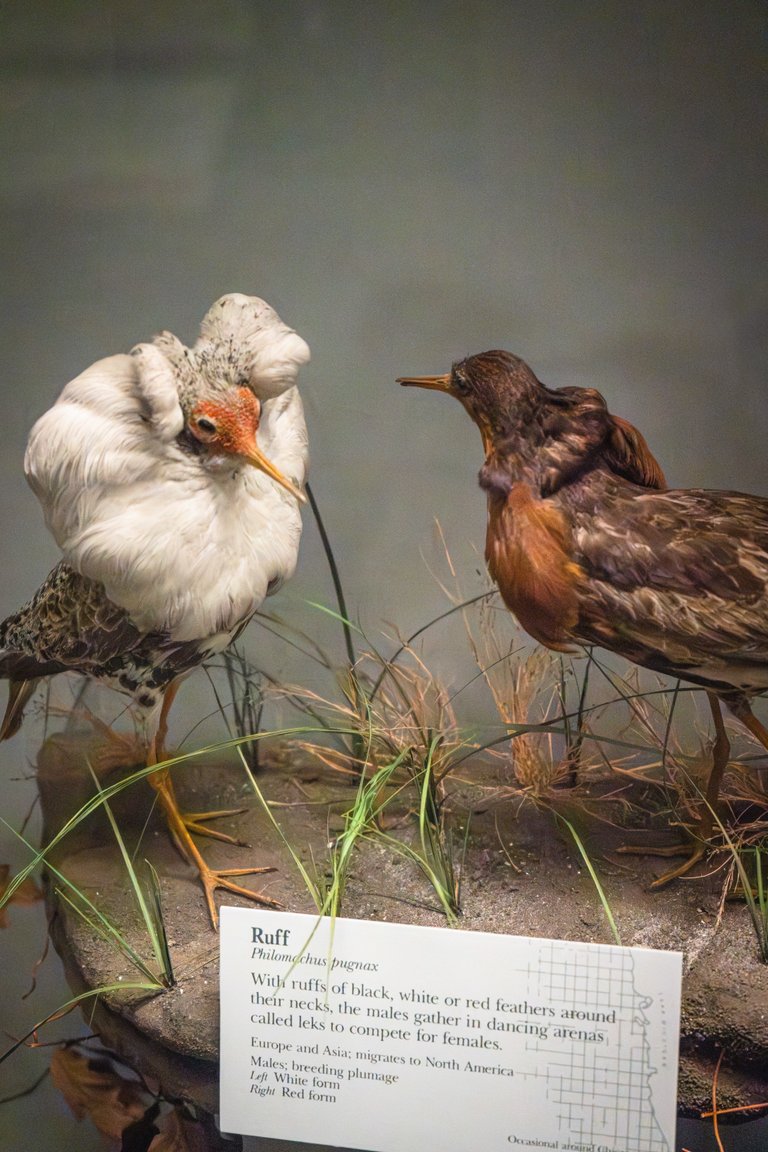
The Ruff (Calidris pugnax) is a medium-sized wading bird that breeds in marshes and wet meadows across northern Eurasia.
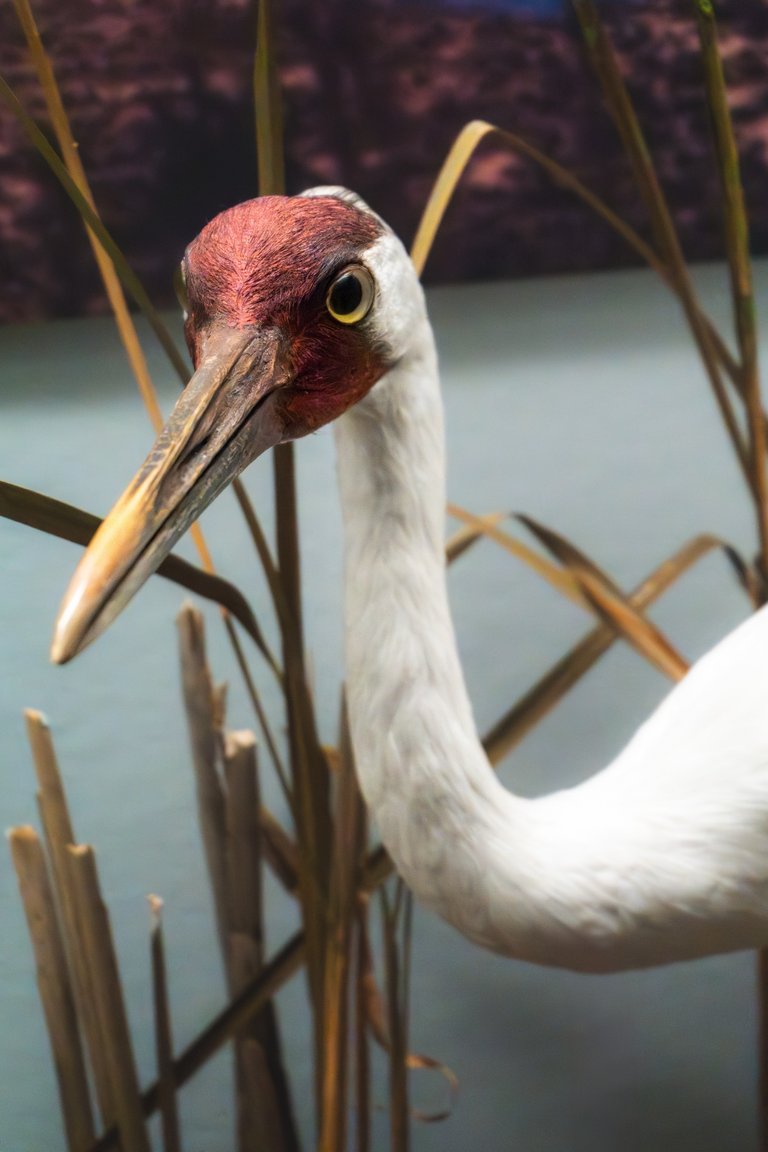 Whooping Crane
Whooping Crane
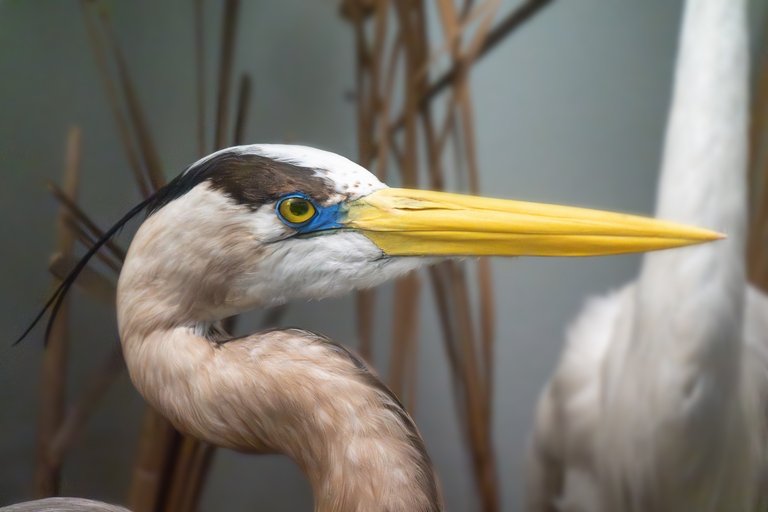 Great Blue Heron
Great Blue Heron
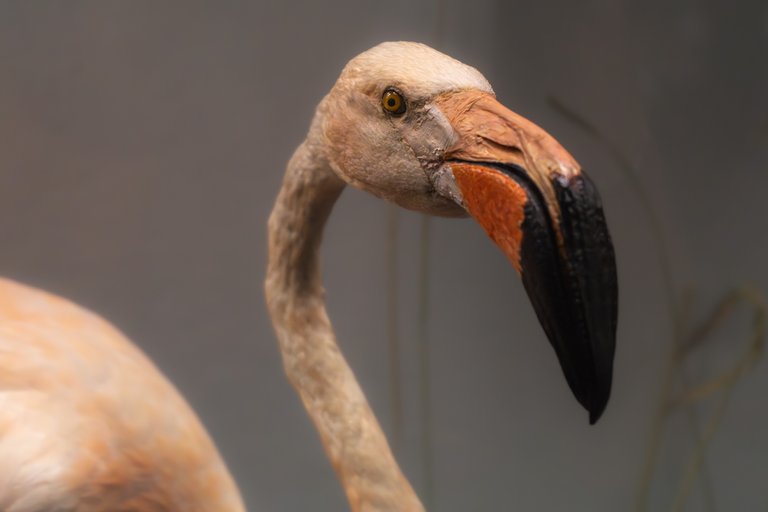 Greater Flamingo
Greater Flamingo
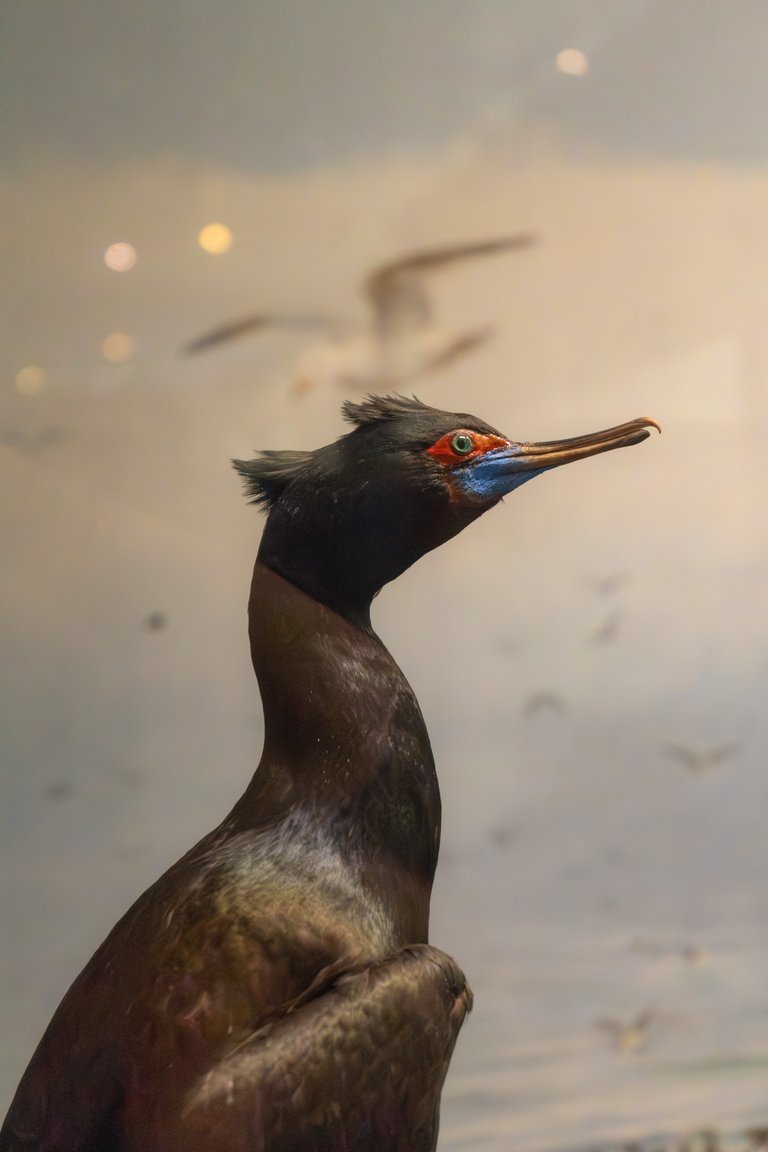 Red-faced Cormorant
Red-faced Cormorant
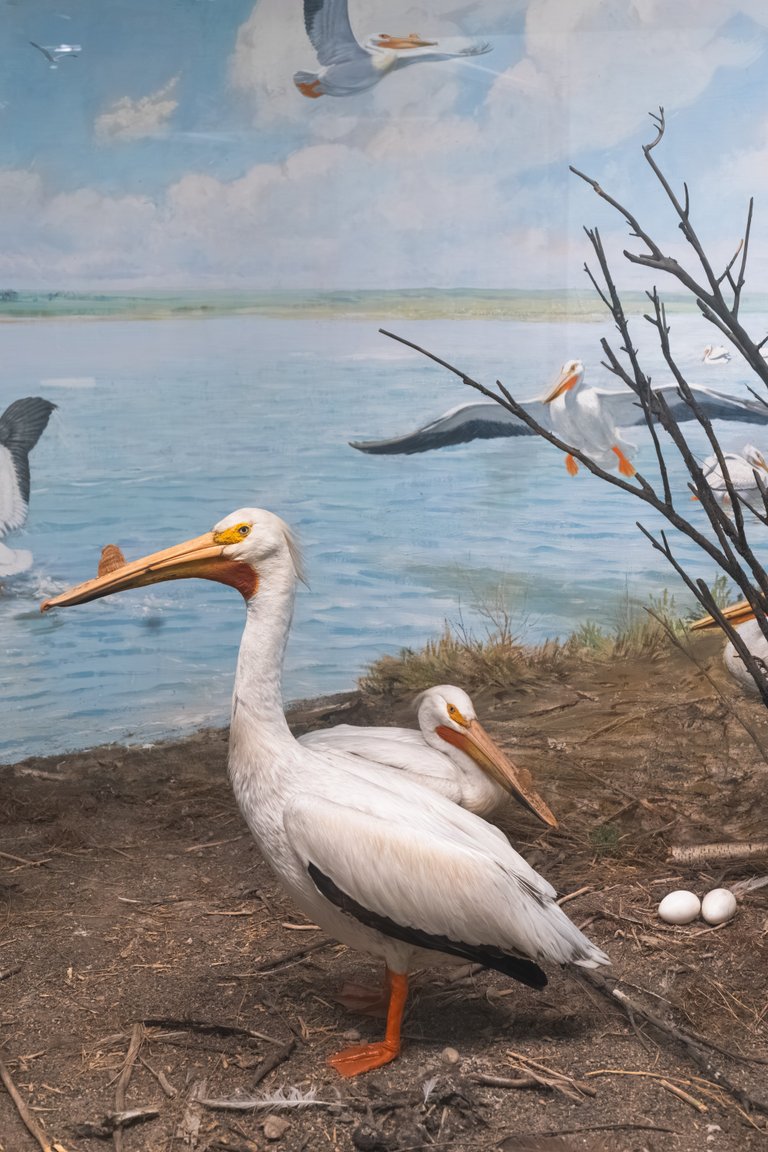 White Pelican
White Pelican
I would much rather see birds flying in the wild, but I do appreciate all the research the museum does and the opportunity to learn more about them.
20% of this posts rewards go to the Feathered Friends Community. @hive-106444


!BEER
View or trade
BEER.Hey @melinda010100, here is a little bit of
BEERfrom @pixresteemer for you. Enjoy it!Do you want to win SOME BEER together with your friends and draw the
BEERKING.View or trade
BEER.Hey @melinda010100, here is a little bit of
BEERfrom @pixresteemer for you. Enjoy it!Did you know that <a href='https://dcity.io/cityyou can use BEER at dCity game to buy cards to rule the world.
Hello, dear friend @melinda010100, good afternoon.
I can only imagine what it must be like to be in that museum, with these exhibits and the ambient sound of the birds.
What beautiful specimens.
Beautiful shots, dear friend. I appreciate you letting us know.
Have a lovely evening.
It must have been an interesting visit.
I didn't know of a museum dedicated only to birds.
I imagine that that museum, deser a visit for ornithologists visiting the USA.
There are very interesting images, maybe there are even birds on display that are extinct or at risk of extinction.
I hope you enjoyed the walk, it must have been really interesting.
Happy Wednesd.
Este post fue votado desde Ecency.
!HUESO
Happy to see those birds, and yeah I prefer them to be flying as well, living in nature to see how they do thier things in nature, but also having them preserved is also nice so that more people can learn about the birds, and also the impact that we have so that some of them might be dissappearing.
!PIZZA !LUV !PIMP
$PIZZA slices delivered:
@ekavieka(2/5) tipped @melinda010100
Come get MOONed!
I would definitely like to visit this museum. There are many interesting things to see here. Reading about birds and their history has increased our knowledge a lot.
Watching birds fly freely in the wild has its own irresistible allure. Everyone loves it. But museums like this are also crucial for education and preservation, especially for endangered species, as you mentioned earlier. Seeing the collection of birds you displayed makes me want to visit that place. Unfortunately, it's so far away.
These birds are all beautiful. I don't even know some birds existed or their names until I viewed your blog. Thanks for sharing.
It's definitely a place to visit to grow bird knowledge. 🐦 I agree with what you said about watching them live in their environment, but you will never see such a huge collection together in one place.
That's a fantastic display they have there, and very educational. Of course it's always nicer to see them in real life in nature, It would take a lot of travel to see them all!
Congratulations @melinda010100! You received a personal badge!
Wait until the end of Power Up Day to find out the size of your Power-Bee.
May the Hive Power be with you!
You can view your badges on your board and compare yourself to others in the Ranking
Check out our last posts:
It was very interesting! a cool museum. It's not even just a photo of birds, but an stuffed animal so that you can look at a bird in 3d😀
I would like to take a walk through this museum and see all this.
I love museums like this. Last year, I took my granddaughter to our local museum of local lore, but of course there are not so many birds and animals represented there.
That is a very spectacular view. Bunch of birds in a place. This thing is saved for the next generation to see it.